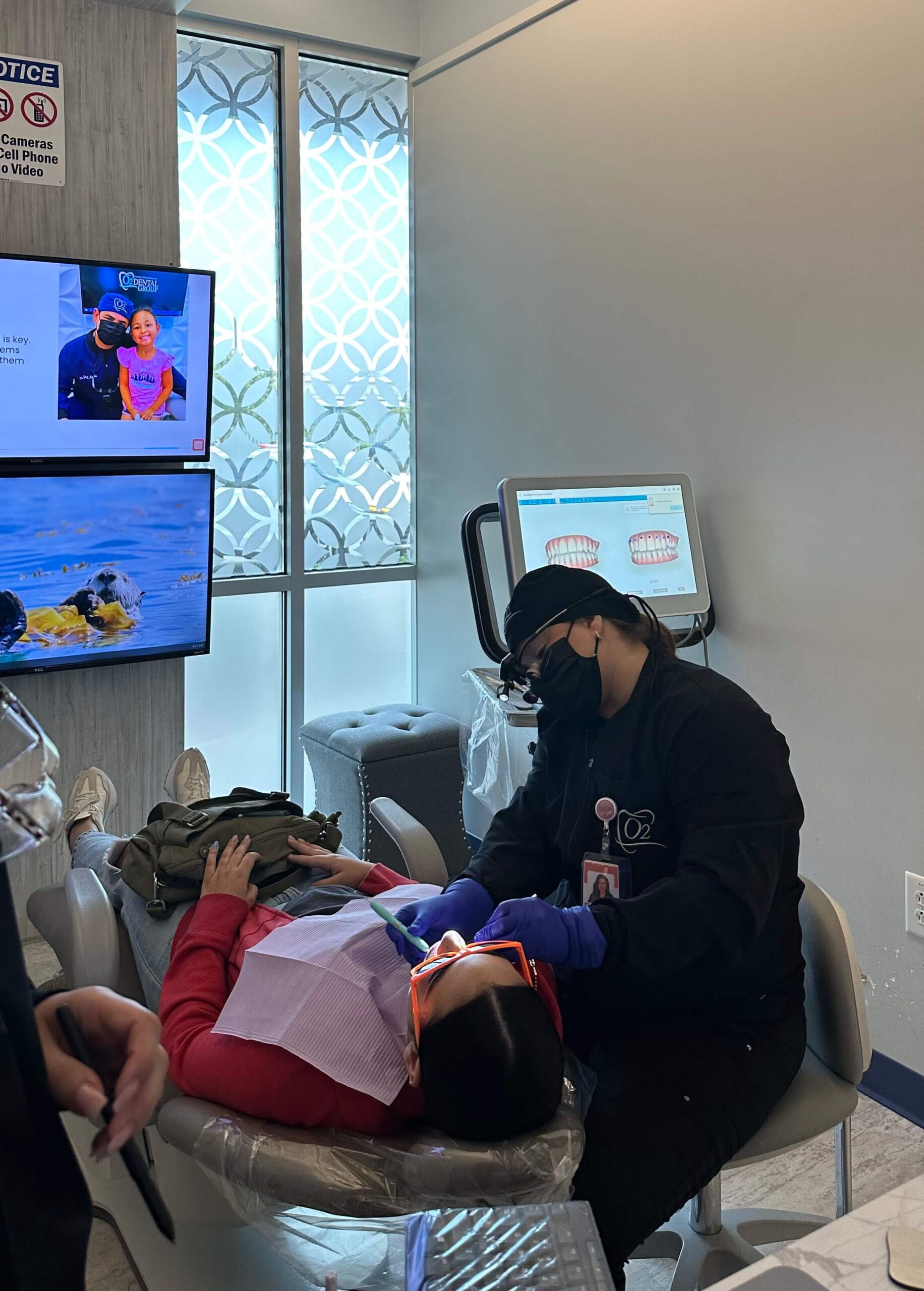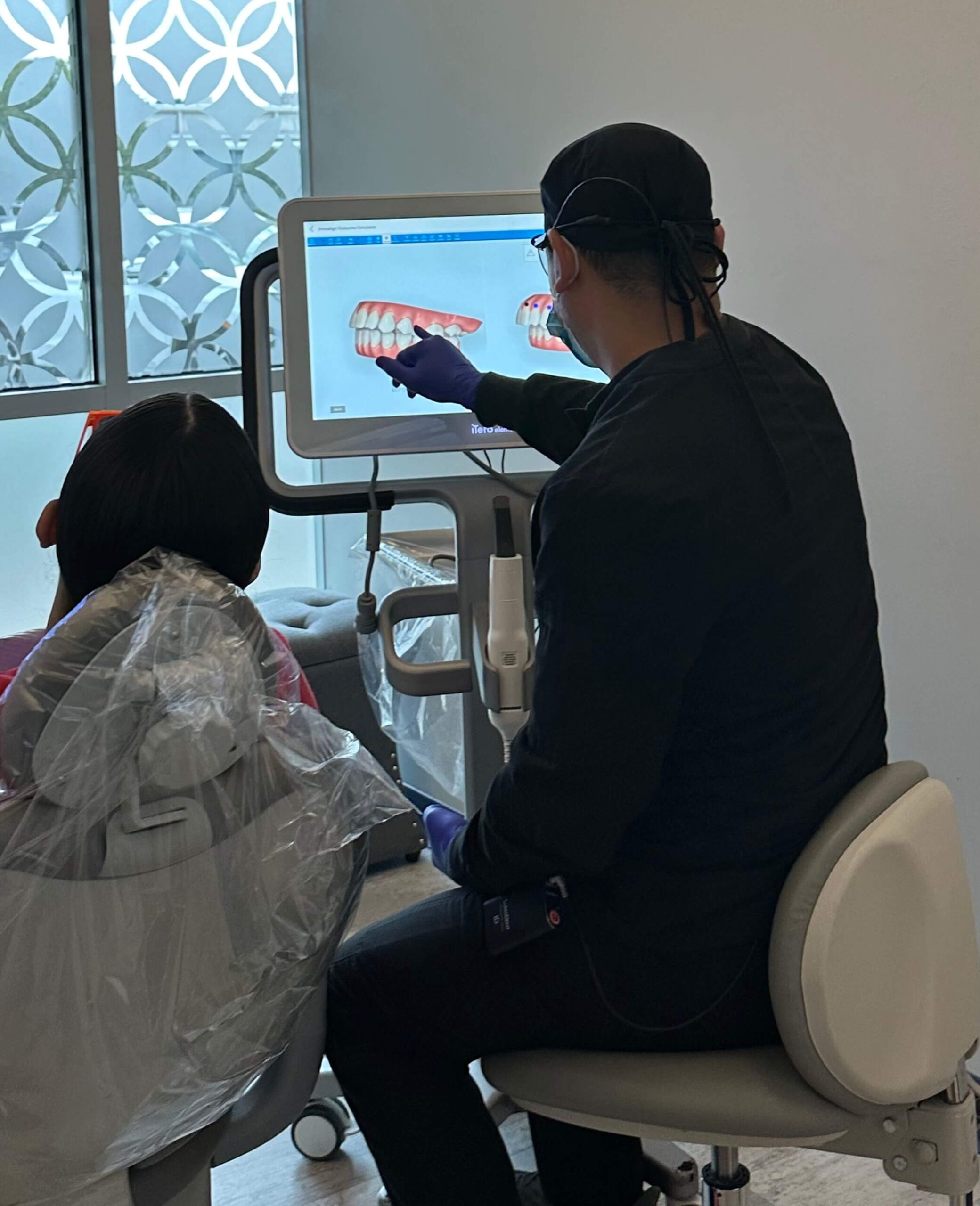Dental X-Ray
Overview of Dental X-rays
Dental digital X-rays utilize digital sensors to capture high-resolution images of the teeth and other oral structures, providing dentists with a powerful diagnostic tool to detect dental conditions such as gum disease, cavities, and infections before they progress.
Digital X-rays offer numerous benefits, such as enhanced image quality for more accurate diagnosis and reduced radiation exposure compared to traditional film X-rays.

Advantages of Dental Digital X-Rays
Increased Accuracy
Dental digital X-rays produce high-resolution images compared to traditional dental X-rays. Since the X-rays are in a digital format, your dentist can easily enhance the images using digital manipulation techniques to produce incredibly accurate results.
For example, digital X-rays can be tweaked by changing contrast and brightness levels or increasing image sharpness, allowing your dentist to accurately diagnose dental issues such as tooth decay, infections, and gum disease.
Reduced Radiation Exposure
A significant disadvantage of traditional dental X-rays is that they require high radiation levels to capture images. On the other hand, digital X-rays utilize specialized image-capture sensors that use up to 90% less radiation than traditional models.
The reduced radiation exposure makes digital X-rays ideal for patients sensitive to radiation, especially pregnant women and children. Additionally, the low radiation levels produced by dental digital X-rays mean they are safer to use over time than traditional models.
Faster and More Efficient Process
Not only do dental X-rays produce accurate results compared to traditional models, but they are also faster and more efficient. For instance, digital X-rays are captured electronically and can be viewed instantly on a computer screen. Conversely, traditional X-ray films must be developed before viewing them, this process can take up to an hour.
Additionally, digital X-rays provide a better patient experience because it can result in less time in the dental office and faster, safer and more accurate treatment.
Better Communication and Collaboration with Other Healthcare Providers
A significant advantage of dental digital X-rays is that they can be stored electronically. Not only does this eliminate the need for physical storage, but it enhances communication and collaboration with other healthcare providers.
Your dentist can easily retrieve digital X-rays from their computer system and share them with other healthcare providers if needed. Moreover, they can review your X-ray results with other dental professionals to provide an accurate diagnosis leading to better treatment outcomes.
How Dental Digital X-Rays Work
Dental digital X-ray machines use advanced sensors to capture X-ray images. Here’s a detailed breakdown of how the technology works:
The X-ray sensor, a small electronic device that captures X-rays as they pass through the teeth, is crucial to digital dental X-ray technology. The X-ray sensor comprises a thin material containing a layer of silicon and a layer of phosphors.
When the sensor is exposed to X-rays, electrons in the silicon layer become excited and move to a higher energy state. Once the electrons return to their original state, they release energy in the form of light photons.

The phosphor layer in the sensor absorbs the emitted light photons and converts them to electric signals that can be read and converted into a digital image by the X-ray machine. The digital image is then transferred to a computer for further processing and viewing.
What to Expect During a Dental Digital X-Ray
Preparation for the Procedure
While preparing for a dental digital X-ray requires minimal effort, following the steps below will ensure accurate results.
- Consult your dentist: It’s essential that you consult your dentist about any pre-existing dental or medical conditions. This information will help your dentist determine the best approach for your dental imaging
- Dress appropriately: Avoid wearing metal jewelry or accessories as they may interfere with the X-ray images. Also, it would be best if you wear comfortable clothing that is easy to adjust to make the X-ray process easier
- Follow instructions: You should comply with any instructions provided by your dentist during your consultation. This may include removing any detachable dental appliances, such as braces and dentures
- Avoid eating or drinking: Don’t drink or eat before the X-ray procedure. This will ensure the images are clear and accurate.
The Process of Taking Digital X-Rays
Here’s what you can expect during the dental digital X-ray procedure:
Preparation
Your dentist will ask you to remove any metal accessories or jewelry as they may interfere with the X-rays. They will then ask you to wear a lead apron to protect your body from radiation exposure. Before beginning the procedure, your dentist may also detach any removable dental appliances, such as braces and dentures.
Sensor Positioning
After your preparation, your dentist will position the X-ray sensor in your mouth. The sensor is typically placed against the teeth and gums for the best results. Your dentist may also use a bite block, a wedge-shaped implement, to help keep your mouth open and steady during the procedure.
Image Capture
Once the dentist is satisfied with the positioning of the sensor, they will activate the X-ray machine, which emits a small amount of radiation. The X-ray sensor will capture images of your teeth, gums, and oral cavity and send them to the computer. The image capture process is painless and only takes a few seconds.
Image Review
Your dentist will then review the images on their computer. The advantage of digital X-rays is that they can be enhanced using special software. For example, your dentist can increase the contrast of your X-ray images to get a detailed view of your teeth and the surrounding structures. As a result, your dentist can identify oral issues that are impossible to detect through an oral exam or traditional X-rays.
Safety Concerns and Precautions
Not only are dental digital X-rays considered safer than traditional film X-rays, but they also have many advantages. However, there are still some risks associated with digital X-ray technology that you should be aware of.
They include the following:
- Radiation exposure: While dental digital X-rays use significantly less radiation than traditional film X-rays, frequent digital X-ray procedures have a cumulative effect. Though the amount of radiation used in a digital X-ray procedure is considered safe, dentists have to take precautions to protect your body from radiation, such as using lead aprons and thyroid shields
- Misdiagnosis: A significant advantage of dental digital X-rays is the highly detailed images they produce. However, the X-ray machine can produce inaccurate images if incorrectly calibrated. For example, overlapping oral structures can sometimes create images that resemble cavities or other dental issues. Moreover, the dental professional may provide an incorrect diagnosis if they aren’t adequately trained in interpreting digital X-rays
- Allergic reactions: Sometimes, your dentist may use contrast dyes when taking digital dental X-rays to help highlight oral structures. While contrast dyes are typically safe, they may cause allergic reactions in rare cases. Symptoms may include difficulty breathing, itching, and hives.
- Equipment Malfunction: Dental digital X-ray machines can malfunction if poorly maintained or incorrectly calibrated. This can result in inaccurate diagnoses. To avoid this, you should only go for dental radiography from reputable institutions
Steps Taken to Ensure Patient Safety
Though dental digital X-rays are considered safe, your dentist will take the following precautions to avoid any complications and ensure your safety:
- Equipment maintenance: Since faulty X-ray equipment can increase the risk of radiation exposure, your dentist will conduct regular maintenance checks to ensure it’s functioning correctly
- Proper technique: Proper placement of the X-ray sensor in the mouth reduces the risk of unnecessary radiation exposure. Moreover, your dentist will control and minimize radiation exposure when obtaining the X-ray image.
- Protective measures: Your dentist will use thyroid collars and lead aprons to shield the rest of your body from unnecessary radiation exposure.
- Consultation: Your dentist will thoroughly evaluate your medical history to determine if you have any pre-existing conditions that may cause complications during the radiography procedure. The evaluation results will help them determine the best dental imaging approach.
It’s clear that dental digital X-rays are the future of efficient and accurate dental health care. Digital X-rays have many benefits over traditional film X-rays, including quicker processing time, accurate results, and reduced radiation exposure.
Given these advantages, consider using this dental technology to ensure you receive high-quality dental care while minimizing radiation exposure. Consult your dentist to learn more about the benefits of dental digital X-rays and how they can improve your oral health.
Schedule Today!
We look forward to meeting you. Call us or request an appointment online to set up your first visit. We’ll be in touch soon.

